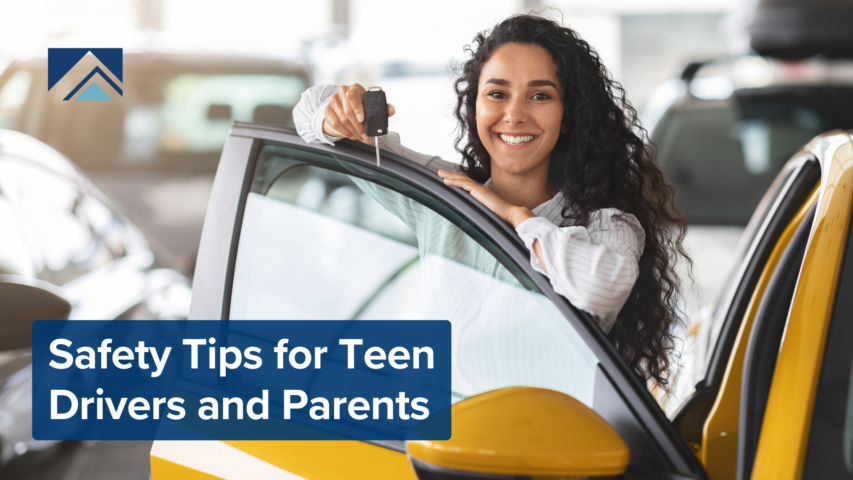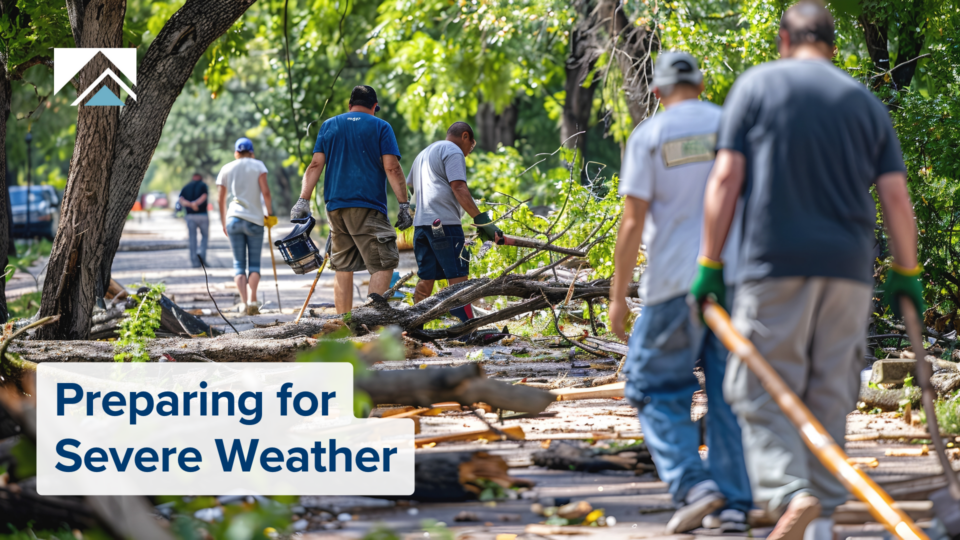Driving is a significant responsibility. Not only does it require financial commitment, driving also comes with serious risks. It’s critical that newer drivers understand the potential risks and consequences associated with driving.
Research from the Centers for Disease Control and Prevention has found that drivers age 16-19 are more likely to be involved in a motor vehicle crash than any other group. Nevertheless, newly licensed teens can avoid accidents by upholding safe driving practices on the road.
By learning best safety practices and knowing the rules of the road, teens and young adults can drive with confidence and keep themselves safe.

Teen Driver Safety
- Always be prepared
- Take care of your vehicle – make sure you keep your vehicle in good shape by taking it for routine oil changes and fluid checks, ensuring the tires are properly inflated and performing other maintenance as needed.
-
Watch the forecast to avoid any inclement weather. If you ever feel uncomfortable driving or feel as though the road conditions are too dangerous, pull over and park your vehicle as soon as it is safe to do so.
-
In severe weather (e.g., heavy rain, snow and fog), road conditions can be significantly more dangerous. Take additional precautions by reducing your speed, increasing your following distance, braking earlier and using your headlights.
- Avoid distractions
- This includes wearing your seat belt, obeying speed limits, using your turn signals and avoiding driving with excess passengers in your vehicle.
- Make sure you approach intersections with caution—never run a red light or stop sign. Even if you have the right of way, look around to confirm it’s safe to cross the intersection before doing so.
- Never drive impaired
- Never drive under the influence of drugs or alcohol. Remember that prescription medications can impact your driving, too.
- Follow the rules of the road
-
This includes wearing your seat belt, obeying speed limits, using your turn signals and avoiding driving with excess passengers in your vehicle.
- Also, make sure you approach intersections with caution—never run a red light or stop sign. Even if you have the right of way, look around to confirm it’s safe to cross the intersection before doing so.
-
-
What To Do After a Car Accident
- Look for injuries
- Inspect yourself and any passengers for injuries. Avoid moving anyone who is seriously injured (including yourself).
- Move to safety
- If your car can be driven, cautiously move it out of traffic to the side of the road. Use your hazard/warning lights and turn your car off after it’s moved.
- Call the police
- Call 911 or the police nonemergency number, depending on the severity of the accident. Depending on the location, this may be a legal requirement in certain situations.
- Document the scene and exchange driver information
- Write down the location where the accident occurred and take pictures of the scene. Speak with the other driver(s) involved and exchange information.
- Get a copy of the police report
- When the police arrive, document the officers’ names and badge numbers. Ask where and when you can obtain a copy of the incident report, which may be needed for your insurance claim.
- Contact your insurer to file a claim
- Call your insurance agent right away after a car accident. You may even consider calling them from the scene of the accident.
Tips For Parents of a Teen Driver
- Enforce the graduated driver’s licensing (GDL) rules
- These restrictions gradually provide newly licensed drivers with more privileges as they get more experience.
- Discuss the dangers
- According to the National Safety Council, more than 3,000 people die each year as a result of distracted driving crashes. Make paying attention to the road your number one priority when you’re behind the wheel.
- Recent research found that solo drivers are more likely to be targeted by criminals due to a lack of witnesses. As such, be sure to remain cautious and aware of your surroundings whenever you are driving alone.
- Set an example
- Don’t drive distracted. Using a cellphone to call or text while driving is dangerous and may be illegal.
- Aggressive habits – such as switching lanes frequently, braking or accelerating suddenly, and tailgating other drivers – can increase your likelihood of being involved in an accident. Try to be as predictable and forgiving as possible by always leaving at least a four-second distance between you and the vehicle in front of you, avoiding abrupt lane changes and keeping a steady pace. If another driver is displaying aggressive habits, try to distance yourself from them or pull over when it’s safe to do so.
- Secure proper insurance
- Choose the right car – used cars are often less expensive to insure than new vehicles and some models are cheaper than others. Sedans and SUVs typically have the best rates for teens.
- Search for discounts – look for good student discounts, family plans, and low mileage discounts.
Adding a teen to your auto insurance will likely cause your premiums to increase, however, it is typically less expensive than having your teen purchase their own insurance.
Whether adding your family’s newest driver to your existing auto policy or choosing to purchase a separate policy, make sure your teen is covered before they get on the road.




